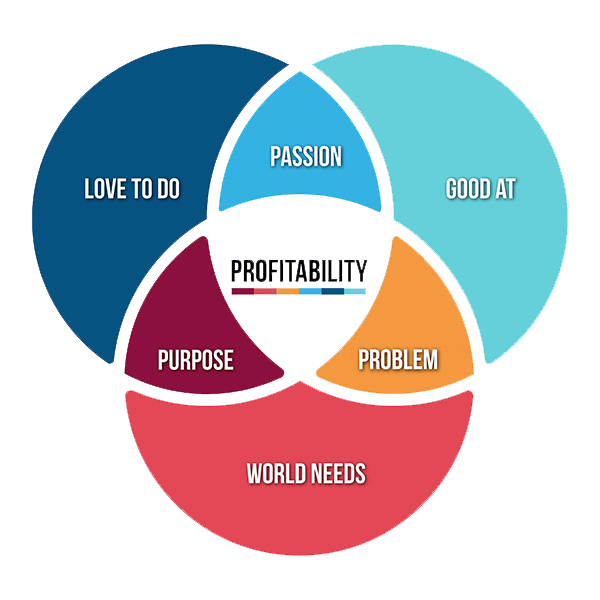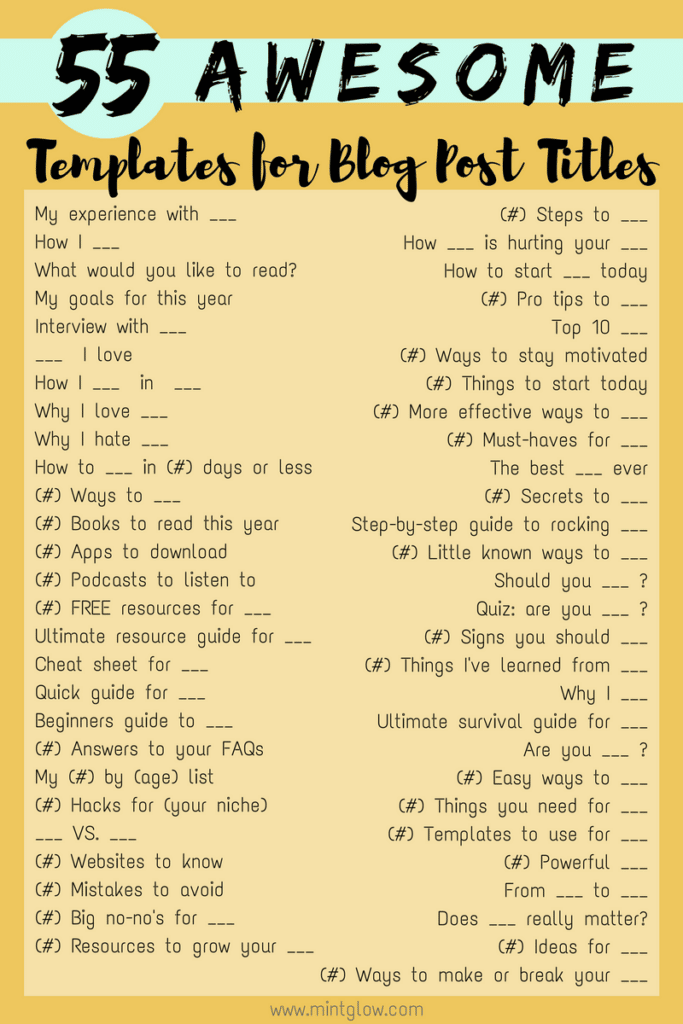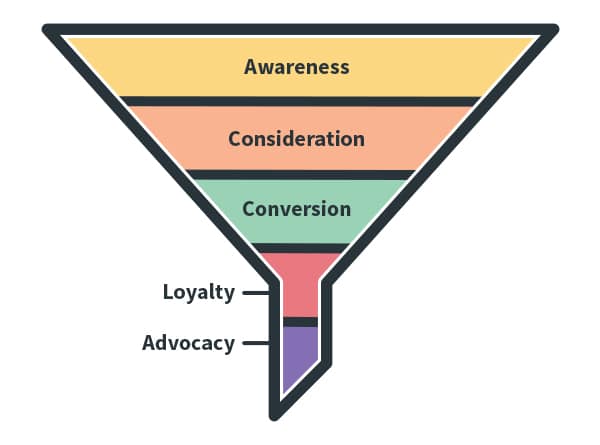You might be able to slay a college essay or sci-fi novel, but do you have what it takes to be a badass blogger?
Writing a blog post is a lot different than writing for other types of media. Because it’s written for the web, you’ll follow a different format and structure. Tone of voice can widely vary from academic to professional to super casual. And if you have a mobile audience, you’ll want to structure your blog post for ultimate readability.
Once you’ve got the look and sound, you’ll also need to consider strategy. A blog is an intentional medium with purpose and goals. Throwing words up on a web page might get you readership, but if it doesn’t help you achieve your larger objectives, you’re not going to get as much from your efforts as you could.
There’s huge potential for blogging. More than 409 million people read 21.1 billion blog posts a month, while more than 2 billion blog articles are published each year. If you want to be among them, use this guide to write a killer blog post in eight no-BS steps.
Blogging Basics
Before I jump into blogging, let’s cover a few basic blogging points. You’ll need the following:
- A blog or other platform for publishing, such as LinkedIn or Medium
- Good research skills
- SEO knowledge (optional but preferred)
- A distribution strategy
- Analytics to measure your impact
- Time (the average blog post takes about 3.5 hours to write)
Prior to writing, think about why you’re blogging in the first place. Are you trying to boost organic traffic? Do you want a better way to connect with your customers? Will your blog be a marketing tool? Perhaps all of the above?
You’ll also want to consider stylistic elements before you begin, such as tone, voice, and branding. These elements will largely depend on who your audience is, where your content will be published, and what you hope to get from your efforts.
You’ve got goals and style, now it’s time to put them all on paper. I’ve broken it in a step-by-step process to help you produce high-quality, effective blog content:
1. Know Who You’re Talking To
Technically, anyone can read your blog article once it’s published. If it’s online and not trapped behind a paywall, internet users from all over the world have access to your content.

But you’re not writing for everyone. Out of 3.4 billion internet users in the world, only a slim few will be interested in what you have to say. Your job is to figure out who those people are:
- What characteristics do they share?
- Why would they be interested in what you’re writing about?
- What issues or pain points can you alleviate for them?
- What topics and writing style will engage them?
Before you write your first blog, you’ll need to pick a niche for your blog’s focus. Your niche is what attracts the right readers to your blog. For example, if you choose to blog about HVAC, then your audience will likely be HVAC technicians, business owners, and homeowners. You’ll develop your content ideas around this niche, so it’s best to focus on an area that will give you tons of content ideas to sustain your blog.
This is a critical first step that is too often overlooked! Your niche is how you build your image as an expert blogger on a particular subject.
For example, my blog is focused on all things digital marketing, branding, and money-making because it fits with my business. You don’t see me writing about the five best hand creams or ways to calm your screaming child. Technically, I could blog about those things, but if I did, I would be casting a wider net when I should be digger deeper into my niche.
When you’re not trying to be everything to everyone and can focus on a specific reader base with specific goals and needs, you’ll have a much better chance of crafting better content and connecting with them on a level that all-purpose blogs have failed to do.
If you haven’t yet chosen a niche (or if you’ve selected a niche but might be open to switching gears), I recommend doing the following:
Choose an Area You Enjoy
Selecting a topic that you enjoy or know a lot about can streamline the research and writing process. The more familiar you are with a topic, the more ideas you’ll likely generate and have a deeper understanding of what other people might like to know about that topic. Plus, writing comes easier when you’re sharing something that’s meaningful to you.

Look for Low Competition and High Interest
Blogging in general is a saturated market, with more than 600 million blogs in existence and 77.8 million blog posts each month. Even so, you can still find profitable niches that other bloggers aren’t focused on.
To start, go to Google Trends and type in a topic of interest to see how many other people are searching for this topic online. You’re looking for topics that have enough of an audience to sustain your blog for the long haul.
Your Google Trends results will show you a graph of related searches over time — try to avoid topics that are on the decline. Ideally, you’ll find a topic that’s fairly stable or that shows interest rising over time.
Ensure Your Niche Can Be Profitable
If you want to earn money with your blog, make sure your chosen niche is profitable enough to help you earn a living.
An easy to test profitability is to see if brands are paying for ads related to your niche. Do a Google search for your topic and see what ads appear at the top of the SERP. If companies are spending money on ads, then you’ve probably chosen a good niche.
2. Find Compelling Topics to Write About
Think of your blog like an umbrella: your niche is the fabric that covers everything while your topics are the metal ribs that hold it all together. Or in other words, there are lots of topics that go into supporting your niche.
Choosing topics can be tricky business. It’s not just about finding high-ranking keywords and developing topics around them. Rather, you need to get inside your readers’ minds to figure out the things they want to read about.

This is how you build authentic relationships with your readers. You’re not just feeding them keywords, but are interested in truly connecting with their needs.
Here are some questions to consider as you’re generating topic ideas for your blog:
- What are the long-term goals of my readers?
- What problems are they facing and how can a blog post solve them?
- How can I relate my own experiences and stories to their needs?
The hard reality is that your blog is not about you! If you want to earn readers, build trust, and make sales, then your content should be focused on what your readers want to know.
To figure out what they’re looking for, you can use Google Autocomplete to see what types of things people are searching for. Just type in a word or phrase and see how Google fills out the rest. Another way is to see what people are asking on sites like Quora and Reddit — look for questions that you can solve in a blog post, then drop them a link to your blog in the comments!
3. Double Down on Your Headline
The headline is one of the smallest components of your blog, but it arguably has the most impact. According to Moz, eight out of ten readers will read your headline to decide whether to click through to your content. Or put another way, if you’re spending $1 on your blog post, $0.80 should go toward crafting your headline.
Your headline serves as a teaser to your blog post. It tells people what your content is about so they can decide if it might meet their needs.
BuzzSumo analyzed more than 100 million article headlines to pinpoint what makes a headline engaging. Here are some insights from their findings:
- Headlines with the phrase “will make you” gained the most Facebook engagement — more than 2x the next most engaging phrase.
- Emotional headlines drive social media engagement.
- Numbered lists are highly popular, with 10, 5, 15, and 7 being the highest performing.
- The idea length of a blog post headline varies by source — Buffer suggests six words or fewer, while Outbrain says 16-18 words drives more engagement.
Regardless of the data, you still need to test headlines to see what resonates with your audience. There is no one size fits all strategy, so don’t be afraid to test variations to see what sticks.
Check out this blog post to get some more ideas: 7 Ways to Write Attention Grabbing Headlines
4. Hook Your Readers from the Start
Once your headline pulls in your readers, you’ve got about two sentences to keep their attention. If your introduction is weak, boring, confusing, or doesn’t get to the point, you’re not setting good expectations for the rest of your content.
According to Neil Patel, there are three main components of an introduction:
The Hook
The hook should be in the first 2-3 sentences that pulls your reader into the content and makes them want to keep reading. It can take the form of a question, compelling stat, or shocking statement, anything that will make the reader pause and think.
The Transition
Once you’ve got their attention, you’ll need a transition to send your reader into the meat of your content. This allows the reader to connect the dots from your title through the hook and into the body of your article.
The Thesis
Before you dive into the bulk of your content, you’ll include a thesis after your transition to set the tone for the article. The thesis reinforces your article topic and makes the reader want to continue.
5. Tell Your Story and Back it Up with Facts
The bulk of your blog content will be the part in between the introduction and conclusion. This is where you’ll highlight your expertise, share stats to support your ideas, answer questions, and solve problems.
There are lots of ways to deliver your ideas to your readers, but none are as impactful as storytelling. Humans have been sharing information through stories for centuries. They make it easy for us to digest information and remember it later, versus stating fact after fact in a boring, academic way.
In addition, stories are effective in stirring emotions. They connect with people on a human level, an essential component of a medium that’s built in the digital space.
One advantage to using stories is that it gives you infinite ways to craft your content in a way that no other brand or blog can replicate. Your own experiences and stories are unique to you, and that level of personalization will make your content unlike any other blog’s content.
If you’re looking for inspiration for your storytelling, here are some ideas to get your creative juices flowing:
- Use your own stories
- Use the stories you collect from your readers, colleagues, fans, or business partners
- Create stories from things you read or see
- Use pop culture references to illustrate a point
What separates blog storytelling from pure fiction is the ability to support your stories with facts. Use data, stats, or other sources that can lend credibility to your story and pull your readers even deeper into your content.
6. Fill in the Blanks on What to Do Next
Your conclusion is your opportunity to tie together everything that you’ve written in your blog post. For most bloggers, the conclusion is the most difficult part to write.
Many writers struggle to end their post on a high note because they want to go out with a bang. They spend a lot of time trying to think of something thought-provoking or influential that leave their readers wanting more. After all, the most memorable sporting events are those that have a strong finish. The best part of a concert is the encore, and the best part of a firework shows the grand finale.
But instead of waxing philosophical, connecting the dots for your readers is a lot easier than you think.
Let’s look at some tips on how to write a great conclusion that will leave your readers satiated and ready to take action:
Reinforce Your Article’s Purpose
Like the last chapter in a best-selling novel, your blog articles conclusion as a place for resolution. It should answer the question, So what? so your readers will take something away from everything they’ve just read.
But don’t simply restate everything you mentioned in the introduction —they’ve already read that. Instead, you might summarize some of the key points that you made in the context, then connect the dots for the readers in a 1-2 sentence summary.
Keep It Short
As a general rule, conclusions are usually short and sweet sentiments at the end of your blog post. Most conclusions are anywhere from 50 to 250 words, with many experts saying the shorter the better. But the length of your conclusion largely depends on the length of your article. Writing a 3000 word blog post on marketing and summing it up with a three-sentence conclusion probably isn’t enough to reinforce your ideas.
Remember, your conclusion isn’t the place for you to go into great detail on a topic. Save that for the body of your article and try to be as concise as possible during your closing statements.
Include a Call to Action
Now that your reader has made it to the end of your blog article, what do you want them to do next?
And in your blog post with a call to action goes back to your original objective for that blog post. In essence, it’s the reason why you wrote the blog post in the first place — to hopefully elicit some action from your reader.

Examples of a call to action include:
- Sign up for an email newsletter or other opt-in (awareness stage)
- Go back to your blog for more insights (awareness stage)
- Schedule a call with a salesperson (buying stage)
- Visit another page on your website (awareness/research stages)
- Request more information (research stage)
- Share the content on social media (awareness stage)
- Leave a comment (awareness stage)
- Sign up for a free trial (research/buying stage)
If you’re blogging for business purposes, the call to action you choose isn’t something you selected at random. Think about where your reader might be in your sales and marketing funnel and try to align your CTA with the next step in the buyer’s journey.
For example, someone who is brand new to your blog might not be ready to buy your online course after reading just one article. Likewise, someone who is willing to whip out their wallet doesn’t want to go read another blog post.
When you go back to your initial objective for writing the blog post, you’ll want to consider where your audience might be in the buying process when reading your post. Many marketers create blog content that speaks to each stage of the buyer’s journey to help them move from one stage to the next.
When you create this type of content alignment, your entire message becomes more effective and valuable to your readers.
Issue a Challenge
Who doesn’t love a good challenge? If you’ve provided thorough, helpful content that taught your readers how to do something, challenge them to put their new knowledge to good use.
Even small challenges, like telling the readers of your fitness blog to try doing 20 squats a day for a whole week, can be enough to inspire them and provoke action.
7. Pay Attention to Format and Structure
Can you think of a time when you read a blog post word for word? Most people can’t. On the web, we tend to skim content looking for the most important pieces of information. Interestingly, articles that take less time to read are also the ones who get the most engagement on social media. One Nielsen test found that blog posts in a scannable format increase usability by 124%.
This doesn’t mean you have to sacrifice length to keep read time low. Good formatting can make your content easily scannable to reduce read time without cutting out essential parts.
Boost your scannability with the following elements:
- Avoid large blocks of texts and keep paragraphs to one to three sentences each.
- Use bulleted or numbered lists when necessary.
- Separate sections using H2 and H3 subheaders.
- Limit each paragraph to one idea.
- Intersperse your content with images, pull quotes, infographics, and other visuals to break up the page.
- Use bold text to draw attention to specific words or ideas.
In addition to the above, go back through your blog post when you’re done writing and trim the fat. Cut all unnecessary information, redundancies, or run-on sentences to shorten the read time.
In most cases, you can tighten up your content by eliminating these words from your writing:
- That (He said that he was hungry vs. He said he was hungry)
- Just (He just needs a break vs He needs a break)
- Really (I really need more sleep vs I need more sleep)
- Very (He’s very shy vs. He’s shy)
- Quite (She’s quite mean vs She’s mean)
Cutting excess words from your content makes it shorter without losing any value. In fact, because it’s easier to read, you could argue that it’s even more valuable!
8. Focus on Writing Quality
If you’ve invested time learning about SEO, it’s easy to get caught up in the details and optimization techniques. But while you’re trying to follow the rules and SEO best practices, it’s important not to let quality writing fall by the wayside.
Even if you follow all of Google’s rules to a T, you’re still ultimately writing for a human audience. And if your content is low quality and doesn’t address their needs and doesn’t speak directly to them, they’re more likely to bounce from your website and never return.
You may be wondering, what does quality blog writing look like?
Let’s look at the essentials that you need to include in every blog post:
Authoritative Sources
Even when you’re writing from your own experience, it’s important to backup any factual claims with evidence. We’re living in the age where anyone can publish just about anything, and given the level of misinformation that circulating on the Internet, it’s essential to establish trust and credibility with your readers.
When they feel like they can trust the content you’re providing them is authentic, honest, and factual, they’ll be more likely to view you as a trusted source of information.
Zero Fluff
If you’ve ever read a blog post that had a lot of words but didn’t really say anything, then you know how damaging fluffy content can be to your brand image. Raiders are coming to you to get answers to questions, solve problems, or learn more about a topic. They don’t want to waste their time sifting through filler statements.
The meatier your content, the more value you provide. If you can’t find enough to say about a topic without using useless filler, find a new topic you’re more qualified to write about.
Unique Content
Quality content doesn’t rehash everything else that’s already been said. If a reader can find everything that you have to share somewhere else, then why would you waste your time creating something that already exists?
Instead, approach every blog post with originality in mind. What can you bring to the topic that maybe no one else is talking about? You might use existing stats or data to support your blog post, but ultimately you need to bring enough originality to it to give your readers something new to take away.
Connection with the Reader
Blog posts have a unique opportunity to connect with and engage a reader. Think of it as having a conversation with them, without the benefit of having two-way communication. Don’t lecture your reader, just talk to them. Connect with them on a personal level and help them see the value you bring.
Next Steps
Once you hit Publish, take a moment to appreciate all your hard work, then jump right back into business. Part of what makes a blog post so successful is how, when, and where it’s distributed. If organic search traffic isn’t your forte, you’ll need to figure out how to get your blog post in front of the right people.





